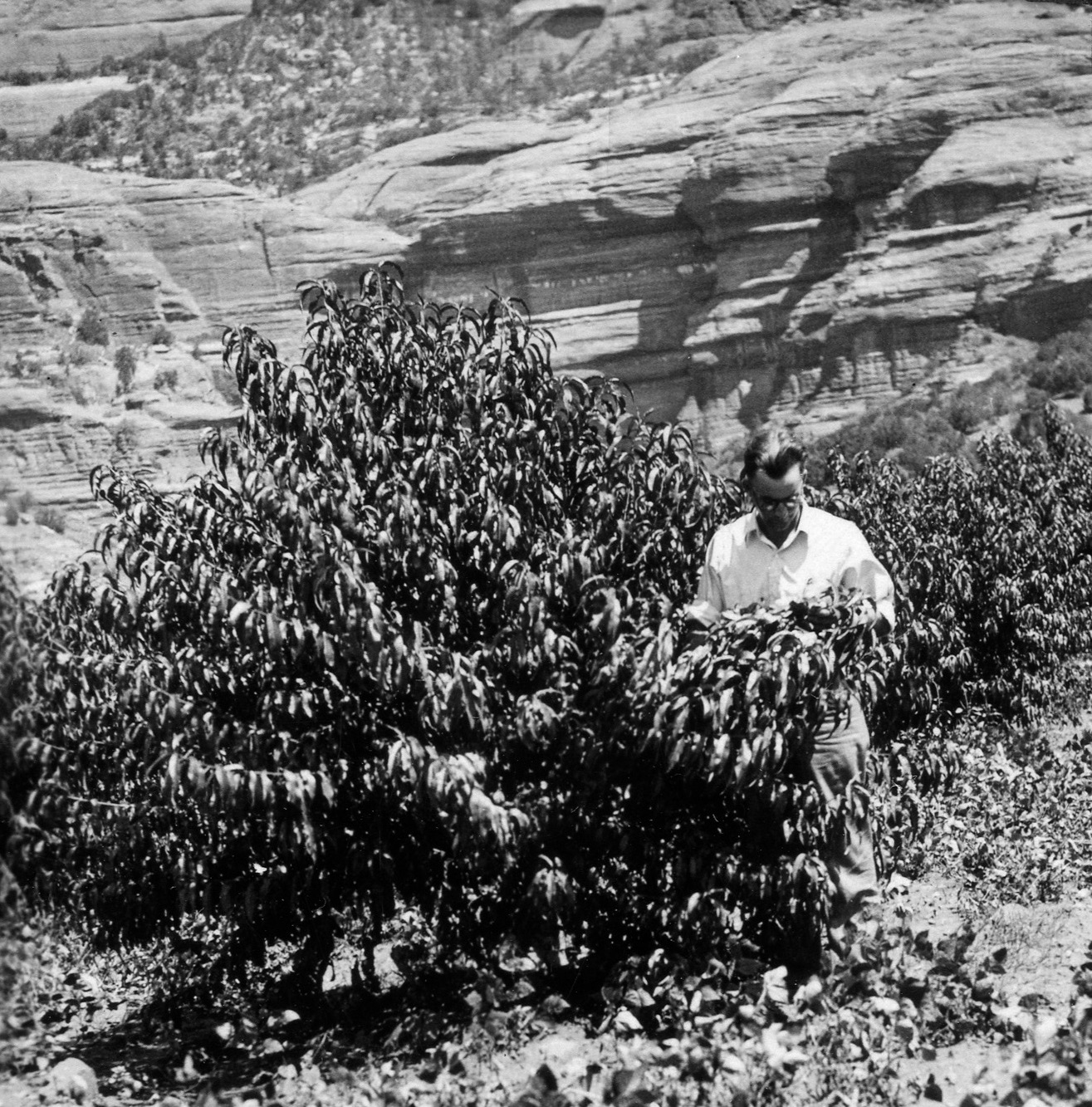 Cooperative Extension History - January 10, 2018 Jeff Schalau, Agent, Agriculture & Natural Resources University of Arizona Cooperative Extension, Yavapai County This column is about the story of Cooperative Extension. It's an interesting story that arose from the desire to improve production of food and fiber, was adapted to a variety of environmental conditions, introduced technological advances, and continues to serve local populations according to critical needs. Early agricultural societies in the Europe and Eastern United States would gather locally to compare their agricultural successes and failures. These groups were organized at the county and state levels beginning in the late 1700's. The societies invited guest speakers from colleges, organized fairs and shows, and published journals to disseminate information among the society members. These meetings evolved into Farmer's Institutes lasting two to three days that covered information about farm and home subjects. In 1862, Abraham Lincoln established the U.S. Department of Agriculture. A few weeks later, the Morrill Act was passed. This legislation provided for Land-Grant Colleges. Up to this time, U.S. colleges taught mostly medicine, theology, and classical and cultural subjects. In the late 1850's several states had adopted the European concept of teaching applied science and agriculture. The Morrill Act provided for Land-Grant Colleges to teach agriculture and technology. Many hurdles were in front of the Land-Grant Colleges. Curricula needed to be developed, textbooks were unavailable, professors needed to be hired, and, most importantly, funding needed to be appropriated. By the time professors were hired, most Land-Grant Colleges had acquired a farm. In the absence of textbooks, classes were held at the farm and simple experiments were underway. College presidents and boards pressured congress and the Hatch Act of 1887 soon provided funding for the Land-Grant farms. Today, these farms are called Experiment Stations. As the research/teaching farms grew, they began to develop demonstration sites on private farms throughout their state. Demonstration farms were established in partnership with the U.S. Department of Agriculture (USDA) and local farmers. Demonstration farm programs were in communities where other farmers saw the results of new crop varieties and cultural practices. The demonstration farms were operated by the farmer with the assistance of USDA Agents. The farm-demonstration model quickly gained popularity at the turn of the century and early 1900's. County Agents were a part of the demonstration farm program and were funded by the USDA and various private individuals and commercial organizations. Farm Bureaus were also organized to sponsor county agents in their locally based outreach programs. The Smith-Lever Act was passed in 1914 to provide funding for the county agents and the Cooperative Extension Service was born. In the following years, county agents taught youth through 4-H Clubs and home-demonstration agents assisted with education in the home, while farmers continued learning through on-farm demonstrations and Extension outreach programs. In addition to agricultural programs, Extension agents contributed by assisting with various war efforts, droughts, depression, and economic development of rural communities. Today, Cooperative Extension still serves the traditional roles of agriculture, home economics, and 4-H. In addition, Cooperative Extension has taken on new charges including youth at risk, healthy living, natural resource management, and other locally relevant issues. You can find Cooperative Extension offices and resources in every county of every state across the nation. Arizona's land-grant university is the University of Arizona in Tucson. Construction began on what we now call "Old Main" in 1887. It was completed at a cost of $29,000 in 1889. Demonstration sites were established near Tucson, Phoenix, Tempe, Blaisdell (near Yuma), and Willcox. Prescott also had an Experiment Station, called the Prescott Dry Farm, near the junction of Highways 89 and 89A. Yavapai County's first county agent was George Scherer hired on May 1, 1919. Today, Yavapai County has two Cooperative Extension offices: Camp Verde and Prescott. We also have the University of Arizona V Bar V Ranch Experiment Station that extends from Camp Verde to Happy Jack. Current Yavapai County Extension programs include: Master Gardener/horticulture education, range/pasture management, small acreage, food safety, nutrition, early childhood development, 4-H Youth Development, and 4-H STEM. Funding for Yavapai County Cooperative Extensionís educational programs is provided by the U.S. Department of Agriculture, the State of Arizona, the Yavapai County Board of Supervisors, and various grants, gifts, and contracts. Visit the online edition for links to more information about Cooperative Extensionís history and current efforts. Follow the Backyard Gardener on Twitter Ė use the link on the BYG website. If you have other gardening questions, call the Master Gardener help line in the Camp Verde office at 928-554-8992 or e-mail us at verdevalleymg@gmail.com and be sure to include your name, address and phone number. Find past Backyard Gardener columns or provide feedback at the Backyard Gardener web site: http://cals.arizona.edu/yavapai/anr/hort/byg/. Additional Resources  University of Arizona Cooperative Extension Horticulture Specialist inspecting a peach orchard in the Sedona area in 1931 (from: Yavapai County Cooperative Extension Annual Report 1930-31).
University of Arizona Cooperative Extension Horticulture Specialist inspecting a peach orchard in the Sedona area in 1931 (from: Yavapai County Cooperative Extension Annual Report 1930-31).Cooperative Extension History National Institute of Food and Agriculture nifa.usda.gov/cooperative-extension-history Cooperative Extension History University of Arizona Cooperative Extension extension.arizona.edu/cooperative-extension-history Archive of Yavapai County Cooperative Extension Annual Reports extension.arizona.edu/yavapai-county-cooperative-extension-annual-reports |